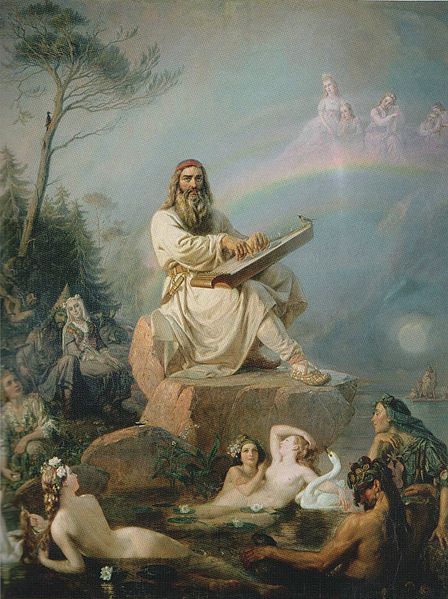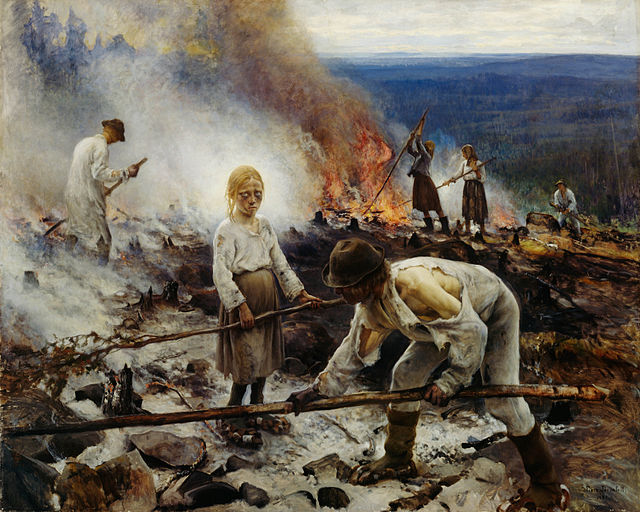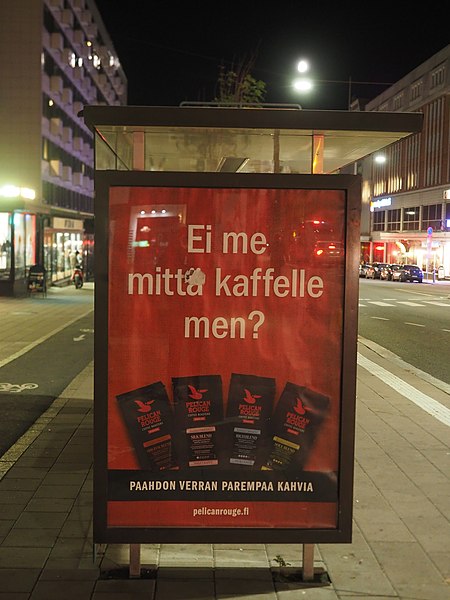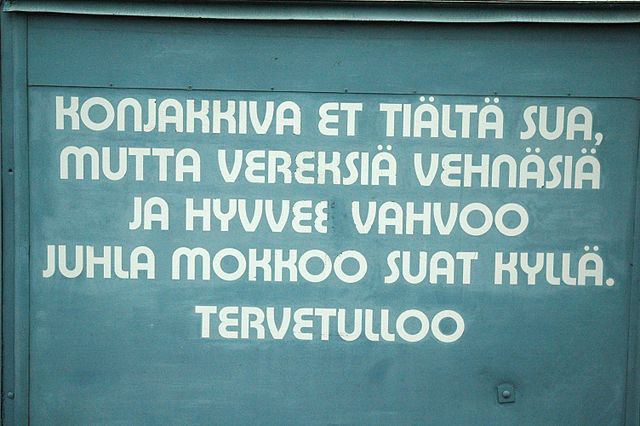Finns or Finnish people are a Baltic Finnic ethnic group native to Finland.
19th century Fennomans consciously sought to define the Finnish people through depiction of the common people's everyday lives in art, such as this painting by Akseli Gallen-Kallela.
Man's costume during the Iron Age according to the archeological finds from Tuukkala. Interpretation from 1889.
Väinämöisen soitto (Väinämöinen's Play) by R. W. Ekman. The painting is a depiction of Väinämöinen playing the kantele.
Peasants toiling at a slash-and-burn site in Lapinlahti, Eastern Finland.
Finnish is a Uralic language of the Finnic branch, spoken by the majority of the population in Finland and by ethnic Finns outside of Finland. Finnish is one of the two official languages of Finland. In Sweden, both Finnish and Meänkieli are official minority languages. The Kven language, which like Meänkieli is mutually intelligible with Finnish, is spoken in the Norwegian counties Troms and Finnmark by a minority group of Finnish descent.
Mikael Agricola, a 19th-century drawing by Albert Edelfelt
Elias Lönnrot as depicted in a 19th-century caricature – Lönnrot made several journeys to Karelia and Eastern Finland to collect folklore, from which he compiled the Kalevala.
The Turku dialect is famous for its seemingly inverted questions. For example, "Ei me mittä kaffelle men?" looks like it means "So we don't go for a coffee?" but actually means "Shall we go for a coffee?"
A sign in Savonian dialect: "You don't get cognac here, but fresh wheat buns and good strong Juhla Mokka-brand coffee you will have. Welcome."








